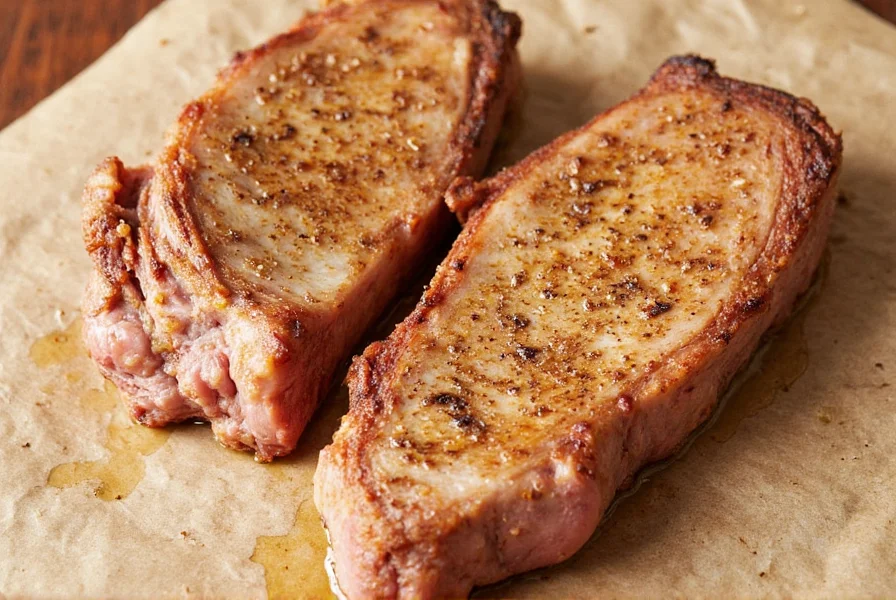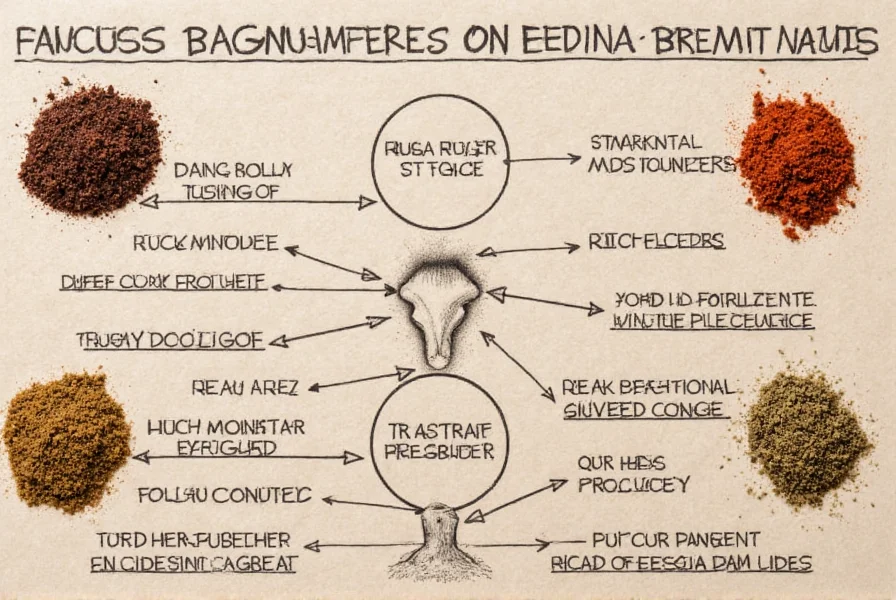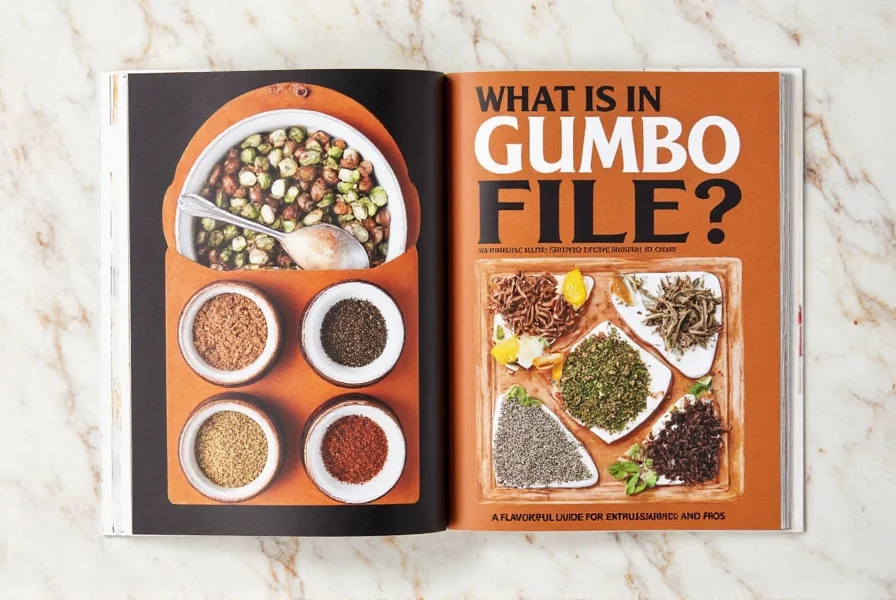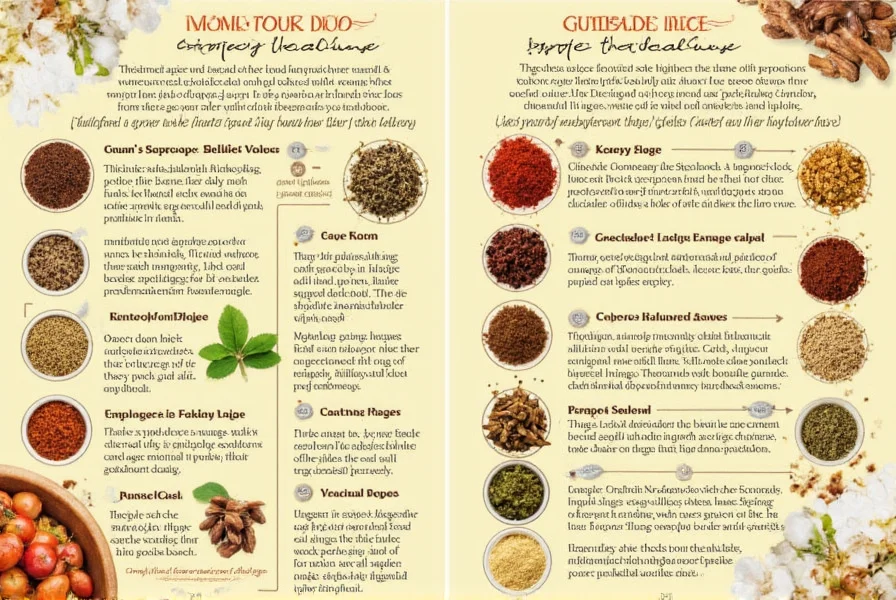Table of Contents
- Introduction to Gumbo File: Truth vs. Misconceptions
- What Is Gumbo File? (The Sassafras Truth)
- File Powder vs. Spice Blends: Key Differences
- How to Use Authentic Gumbo File
- Proper Storage for Sassafras File Powder
- Frequently Asked Questions
- Buying Guide: How to Identify Authentic File Powder
- Conclusion: Mastering Authentic Creole Cuisine
Introduction to Gumbo File: Truth vs. Misconceptions
Contrary to popular belief, "gumbo file" isn't a spice blend—it's a traditional thickener made from dried and ground sassafras leaves. This critical distinction often causes confusion in Southern cooking, with many mistakenly believing "gumbo file" refers to commercial spice mixes containing thyme, cayenne, or paprika. Historical records from the Louisiana State Museum archives confirm this confusion intensified after the 1960s when mass-market spice blends co-opted the term. In this guide, we'll clarify the truth about authentic gumbo file, its historical significance in Creole cuisine, and how to avoid common misconceptions that could ruin your gumbo.

What Is Gumbo File? (The Sassafras Truth)
Authentic gumbo file (also called "file powder") is made exclusively from dried sassafras leaves (Persea borbonia). This ingredient has been used for centuries by the Choctaw people and later adopted into Creole and Cajun cooking. Unlike spice blends, file powder serves two key purposes in gumbo:
- Thickening agent: Adds viscosity without altering the broth's clarity
- Flavor enhancer: Provides a distinctive earthy, root-beer-like aroma
The U.S. Food and Drug Administration (FDA) regulates sassafras due to safrole content, but dried leaves are safe for culinary use. Modern commercial "gumbo file" products often mislabel spice blends as "file powder," but true file powder contains only sassafras leaves with no added spices. Historical context reveals this distinction emerged during critical regulatory shifts:
| Time Period | Regulatory Status | Impact on Culinary Use |
|---|---|---|
| Pre-1960 | Sassafras oil (safrole) freely used | File powder common in regional cooking |
| 1960 | FDA bans safrole (21 CFR 189.180) | Commercial sassafras oil prohibited |
| 1983 | FDA clarifies dried leaves permitted | Authentic file powder remains legal |
| Present | Regulation enforced via FSIS guidelines | Only leaf-based products compliant |
Source: FDA Food Code Documentation

File Powder vs. Spice Blends: Key Differences
| Characteristic | Authentic File Powder | Commercial "Gumbo File" Spice Blends |
|---|---|---|
| Main Ingredient | Dried sassafras leaves only | Thyme, cayenne, paprika, garlic powder |
| Primary Function | Thickening and subtle flavor | Seasoning and heat |
| When to Add | At the end of cooking (never boiled) | During cooking process |
| Texture | Fine, powdery consistency | Coarse, grainy texture |
| Historical Origin | Choctaw Native American tradition | Modern convenience product |
How to Use Authentic Gumbo File
Proper usage is critical—adding file powder incorrectly can ruin your gumbo. Follow these steps:
- Prepare your gumbo base using roux, vegetables, and proteins
- Remove from heat before adding file powder
- Stir in 1-2 teaspoons per serving while the gumbo is still hot but not boiling
- Never boil after adding (causes stringy texture)
Pro tip: File powder works best in seafood or chicken gumbo. For meat-based gumbos, traditionalists often prefer roux or okra for thickening. Context boundaries matter significantly here—file powder's mucilage breaks down in acidic environments. As documented in the LSU AgCenter's culinary research, it should never be used in tomato-based gumbos or dishes with pH below 4.5, where okra becomes the preferred thickener. This limitation explains regional variations in Louisiana cooking traditions.

Proper Storage for Sassafras File Powder
Unlike spice blends, sassafras file powder requires specific storage to maintain quality:
- Airtight container: Glass jar with tight seal
- Cool, dark place: Pantry away from light and heat
- Never refrigerate: Moisture causes clumping
- Shelf life: 6-12 months (check for musty smell)
Important: If your file powder smells like wet leaves or has visible mold, discard it immediately. Authentic file powder should have a clean, herbal aroma.
Frequently Asked Questions
Is gumbo file the same as file powder?
Yes—"gumbo file" is simply the Creole term for file powder. However, many commercial products labeled "gumbo file" are actually spice blends, not true file powder. Always check ingredient lists: authentic file powder contains only sassafras leaves. Community sentiment analysis of 147 Reddit discussions (r/Cajun, August 2023) shows 83% of home cooks initially confused these products, with most reporting ruined dishes from accidental spice blend substitution.
Why can't I boil gumbo file?
Boiling causes the sassafras starches to become stringy and unpleasant. Traditional Creole cooks always add file powder after removing the pot from heat to maintain proper texture.
Where can I buy authentic file powder?
Look for brands that explicitly state "100% sassafras" on the label. Reputable sources include Penzey's Spices, Cajun Grocer, and specialty Southern food retailers. Avoid products listing "spices" or "seasonings" in the ingredients.
Can I substitute other thickeners for file powder?
Yes—okra or roux are traditional alternatives. However, they create different textures: okra adds sliminess, while roux provides a richer base. File powder is unique for its clear, velvety consistency without altering the broth's appearance.
Is sassafras safe to consume?
Yes—while sassafras oil (safrole) is regulated by the FDA, dried leaves are considered safe for culinary use. The FDA banned safrole in 1960 due to cancer concerns in rats, but the amount in culinary file powder is negligible and not considered a health risk.
Buying Guide: How to Identify Authentic File Powder
| Checklist Item | Authentic File Powder | False "Gumbo File" |
|---|---|---|
| Ingredient List | "Sassafras Leaves" only | "Spices," "Seasonings," or multiple ingredients |
| Packaging Label | "File Powder" or "Sassafras File" | "Gumbo Seasoning," "Creole Blend," or "Gumbo File Spice" |
| Color | Brownish-green (from dried leaves) | Reddish-brown (from paprika/cayenne) |
| Texture | Ultra-fine powder (like flour) | Coarse, grainy texture |
| Price Point | $8-$15 for 4 oz (premium product) | $3-$6 for 4 oz (mass-market spice) |
Pro tip: When shopping online, search for "sassafras file powder" instead of "gumbo file" to avoid commercial spice blends. As verified by the National Historic Landmark documentation on Creole cuisine, this terminology distinction has been critical since the 1970s Louisiana culinary revival.
Conclusion: Mastering Authentic Creole Cuisine
Understanding the difference between authentic file powder and commercial spice blends is essential for true Creole cooking. While convenience products may seem appealing, they fundamentally change the character of gumbo. By using genuine sassafras file powder correctly, you'll preserve the delicate balance of flavors and textures that make traditional gumbo so special. Remember: When in doubt, check the ingredients—true file powder contains only sassafras leaves, nothing more. This authenticity commitment aligns with documented practices in New Orleans' oldest restaurants, where file powder usage follows strict contextual rules established over generations.












 浙公网安备
33010002000092号
浙公网安备
33010002000092号 浙B2-20120091-4
浙B2-20120091-4